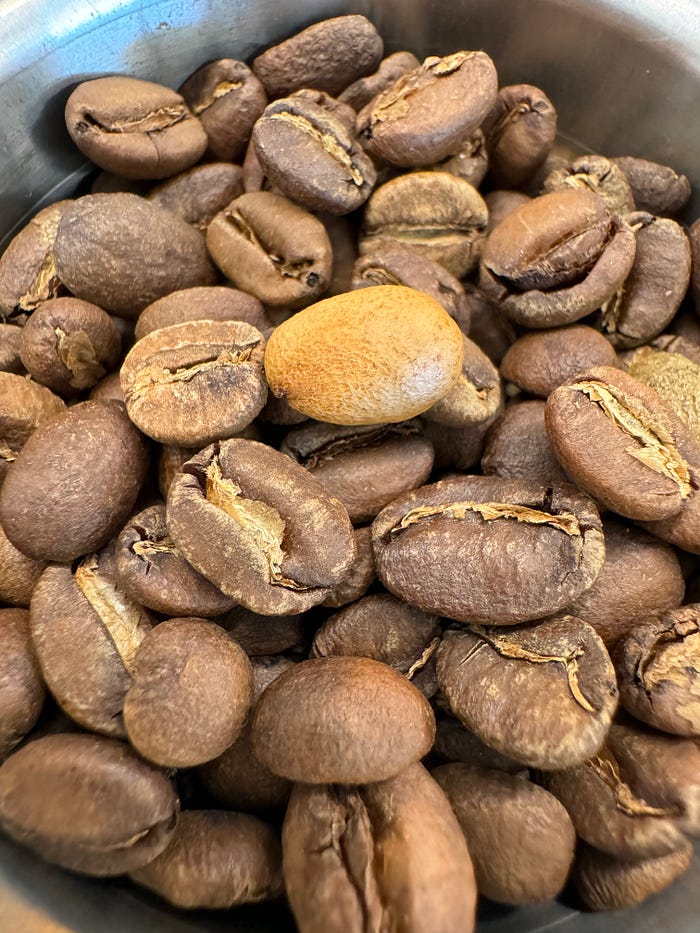Coffee Data Science
Tasting Quakers in Coffee
Searching for defects
As I have been roasting, I wanted to better understand defects through taste and try to understand when a defect starts to become noticeable. I have one variant of beans that has quite a few quakers, so I took the opportunity to taste a shots with one or more quakers.
A quaker is a bean from an under-ripe coffee cherry. In wash processed coffees, these beans float in a water bath rather than sink like ripe cherries. However, in natural processed coffees, under-ripe beans are difficult to detect until after roasting.
I wanted to know at which point I would notice. Another coffee person mentioned they could tell a taste difference at 4 quakers. I tried 1 quaker (0.1g) and 1g of quakers.
1 Quaker

1g of Quakers

Tasting Equipment/Technique
Espresso Machine: Decent Espresso Machine, Thermal Pre-infusion
Coffee: Home Roasted Coffee, medium (First Crack + 1 Minute)
Pre-infusion: Long, ~25 seconds, 30 second ramp bloom, 0.5 ml/s flow during infusion
Filter Basket: 20 Wafo Spirit
Other Equipment: Acaia Pyxis Scale, DiFluid R2 TDS Meter
Metrics of Performance
I used two sets of metrics for evaluating the differences between techniques: Final Score and Coffee Extraction.
Final score is the average of a scorecard of 7 metrics (Sharp, Rich, Syrup, Sweet, Sour, Bitter, and Aftertaste). These scores were subjective, of course, but they were calibrated to my tastes and helped me improve my shots. There is some variation in the scores. My aim was to be consistent for each metric, but some times the granularity was difficult.
Total Dissolved Solids (TDS) is measured using a refractometer, and this number combined with the output weight of the shot and the input weight of the coffee is used to determine the percentage of coffee extracted into the cup, called Extraction Yield (EY).
Data
I only pulled three shots, so this is only to give some intuition on the taste. For 1 quaker, I couldn’t tell a taste difference, but for 1g, the difference was quite clear.

There didn’t seem to be much affect on extraction efficiency.

Quakers are a part of coffee, but lucky, a little sorting after a roast (at least at home roast) can reduce the chances of brewing with them. Even when buying a bag, it is quite easy to remove quakers before grinding.
If you like, follow me on Twitter, YouTube, and Instagram where I post videos of espresso shots on different machines and espresso related stuff. You can also find me on LinkedIn. You can also follow me on Medium and Subscribe.
Further readings of mine:
My Second Book: Advanced Espresso
My First Book: Engineering Better Espresso
